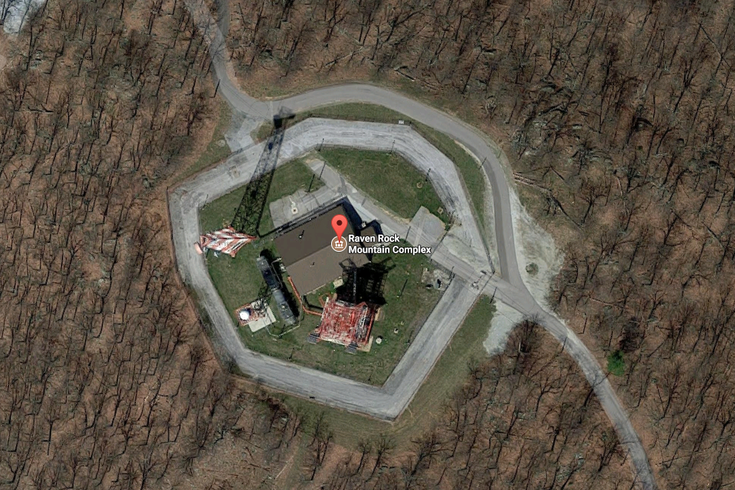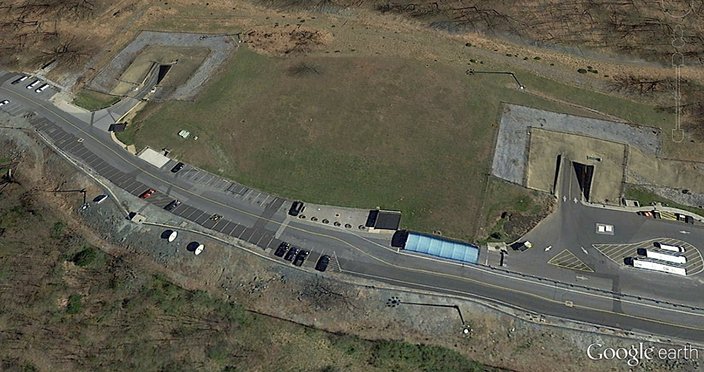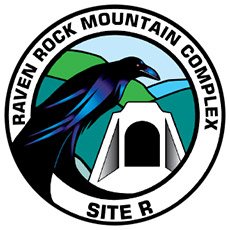
August 24, 2017
 Google Maps/Satellite
Google Maps/Satellite
A Google Maps satellite view of the top of the Raven Rock Mountain Complex in southern Pennsylvania.
When Raven Rock Mountain Complex was being built in southern Pennsylvania during the late 1940s, locals jokingly called it "Harry's Hole" for President Harry Truman. Residents would hold picnics while watching the excavations and blastings. Many worked on its construction.
It was never completely a secret. But it stayed close to one for a while, mainly because no one said anything, said Garrett Graff, a journalist and author of the new book "Raven Rock: The Story of the U.S. Government's Secret Plan to Save Itself – While the Rest of Us Die."
"This was relatively well known to the locals who worked there or had family who worked there," Graff told PhillyVoice in an interview. "They just kept it quiet."
The lid on Raven Rock has slowly been peeled. Located just north of the Maryland border, three hours west of Philadelphia and a short distance from Washington, D.C., it's clearly labeled on Google Maps and been documented in books and articles.
It also isn't a relic. Raven Rock is fully operational, and should the United States break out into nuclear war, it's where defense operations would likely be centered.
"Raven Rock is the place where nuclear war in the United States would begin," Graff said.
The Raven Rock Mountain Complex was carved into the ground during a period of panic.
As the threat of a Soviet nuclear attack loomed, "ordinary families were being encouraged to dig fallout shelters in their backyards," investigative journalist Eric Schlosser wrote in his 2013 book "Command and Control: Nuclear Weapons, the Damascus Accident, and the Illusion of Safety."
At the same time, the military and government were digging holes of their own. A bomb shelter had been built below the East Wing of the White House for President Franklin Roosevelt during World War II, a bunker that was expanded during Truman's administration.
"If at this exact moment the president decides he wants to launch nuclear war, or North Korea does, and for whatever reason he's not able to reach the Pentagon, he would call Raven Rock." – journalist Garret Graff
Planning for a Soviet attack, however, "made it seem necessary to move America's commander-in-chief someplace even deeper underground," according to Schlosser.
The result was a bunker inside Raven Rock Mountain, and it was massive. Per "Command and Control":
"Known as Site R, it sat about a half a mile inside Raven Rock and another half a mile below the mountain's peak. It had power stations, underground water reservoirs, a small chapel, clusters of three-story buildings set within vast caverns, and enough beds to accommodate two thousand high-ranking officials from the Pentagon, the State Department, and the National Security Council."
Graff said you can add to that list police and fire departments, a cafeteria, and "everything else you would find in a normal small city."
The complex was finished in 1953 and has operated 24 hours a day, every day since 1961.
Some of the bunker's facilities are located on or around the mountain, such as the fire department sitting on the peak. Most of the complex, however, is underground. Once the blast doors seal, Raven Rock's dwellers can live there for weeks at a time.
 Source/GoogleEarth
Source/GoogleEarth'Portals' A and B are visible at the Raven Rock Mountain Complex near Waynesboro in southern Pennsylvania in this image from GoogleEarth. Once the blast doors are sealed, dwellers can live there for weeks at a time.
After the Cold War, many bunkers built in anticipation of nuclear apocalypse became obsolete, such as the fallout shelter underneath a West Virginia resort that's now a museum.
Others, like Raven Rock, were kept operational — but barely. That changed after the Sept. 11 terrorist attacks.
"It was more in mothball status," Graff said. "It wasn't quite as dramatic as someone walking into the mountain and turning on the lights, but operational-wise, that’s what happened on 9/11."
The government kicked Raven Rock into gear. The facilities underwent a large expansion, Graff said. About 100 people work there under normal circumstances, but it can now hold about 5,000 in an emergency.
"Raven Rock today is a much more capable and larger facility than it was during the height of the Cold War," Graff said.
In the days following the 9/11 attacks, Vice President Dick Cheney famously used Raven Rock as one of several secret hideaways while his office tried to shield his whereabouts.
"We know it's there, we know why it's there, and that's as much as we know" — Richard Starliper, mayor of nearby Waynesboro, Pennsylvania
Graff clarified there's no evidence Cheney spent the day of the attacks there, but he definitely went afterward. Some defense officials, like Deputy Secretary of Defense Paul Wolfowitz, were taken directly to the mountain complex.
Raven Rock is one of two very similar facilities meant to house officials in case of an attack, with the other being the Mount Weather complex in Virginia. Mount Weather is run by FEMA, and would house most of the civilian government in an emergency.
The Pentagon runs Raven Rock, and it's where national security would operate in the event of catastrophe or war, like if President Donald Trump were to truly release "fire and fury" on North Korea — or vice versa.
"If at this exact moment the president decides he wants to launch nuclear war, or North Korea does, and for whatever reason he's not able to reach the Pentagon, he would call Raven Rock," Graff said.
Considering the heavy responsibility the complex would carry in the wake of tragedy, it's not surprising the government has tried keeping a tight lip on Raven Rock. But there have been blips.
While working on their 2008 book "A Nuclear Family Vacation," defense reporters Nathan Hodge and Sharon Weinberger were seemingly accidentally given information regarding a conference at Raven Rock about underground military facilities.
The reporters simply asked a point of contact for the conference about the event after coming across a notice for it on a Pentagon agency's website. They were handed informational packets distributed to attendees that highlighted the level of secrecy surrounding Raven Rock, which was referred to as RRMC.

The Raven Rock Mountain Complex logo.
It continues: "Remember: The more the public knows about this facility, the more our adversaries do, and the more vulnerable we become."
A few days after the reporters obtained the information, the Defense Threat Reduction Agency took down the notice about the conference. Hodge and Weinberger presumed someone at the Pentagon got in trouble.
Only in the past quarter century since the Cold War has information about Raven Rock become more public, "a testament to the limited communications technologies of the era" when it was constructed, according to Graff.
Raven Rock's relationship with the surrounding community has changed too, particularly since the closure of the Fort Ritchie Army base across the border in Maryland. Some residents of nearby Waynesboro, Pennsylvania, who formerly worked at Fort Ritchie would be stationed at Raven Rock, according to the town's mayor, Richard Starliper.
"These days you have no idea who works there or what they do," Starliper said.
The complex is both a mystery and not at all, a sentiment summed up rather appropriately by the Waynesboro mayor.
"We know it's there," he said, "we know why it's there, and that's as much as we know."